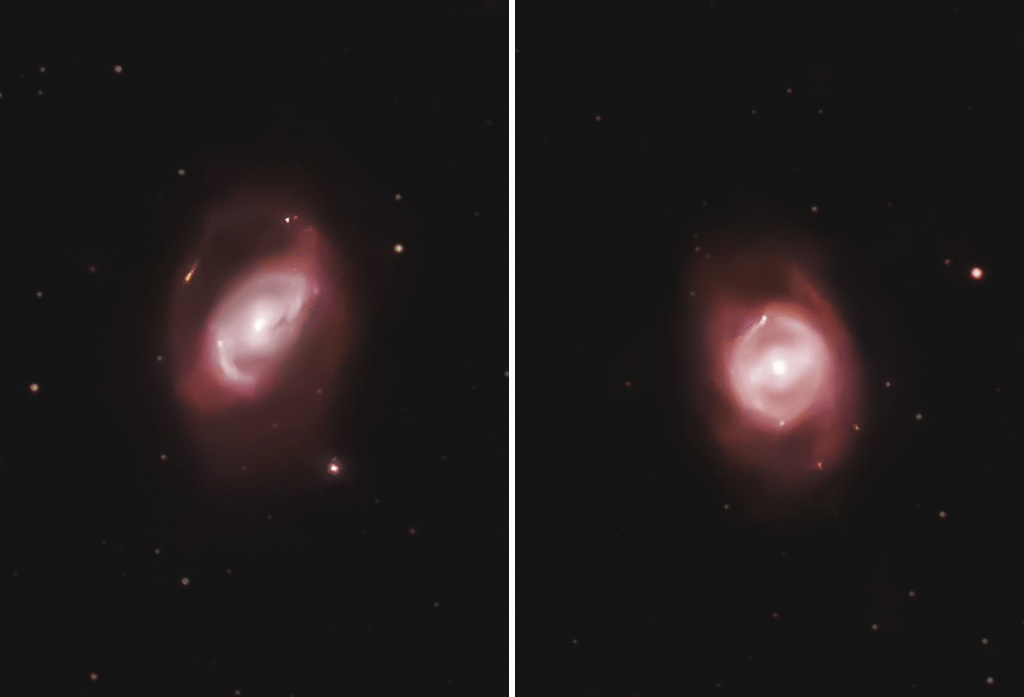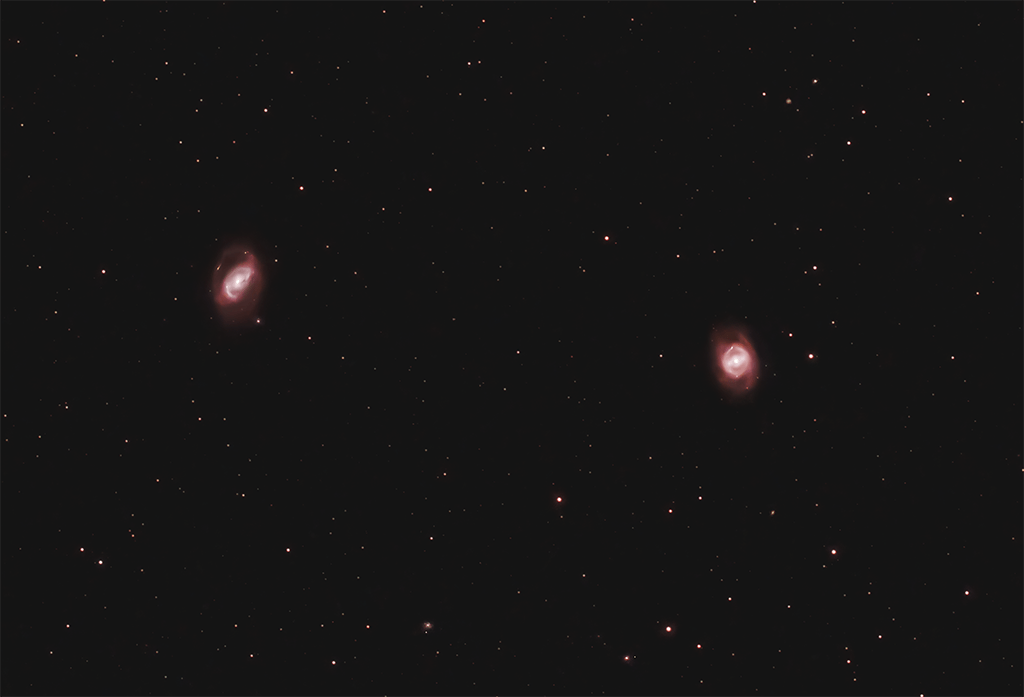Spring is here and with it, Leo, the Lion. At this time of year, the plane of the Milky Way is down out of view, and we can instead see far out into deep galactic space. That means galaxies.
Leo contains many galaxies. Last year at around this time, I photographed the Leo Triplet near the Lion’s back leg. These two spiral galaxies, M95 (right) and M96 (left), are a little further forward under Leo’s belly. They lie about 33 and 31 million light-years away, respectively. M95 (right) has a central bar with a surrounding inner ring, in addition to its spiral arms. M96 (left) has a compact core that’s part barred and part circular, and an outer halo.
With three consecutive clear nights on the weather forecast, I originally intended to spend all of them on this target. However, you guessed it: Only one clear night materialised. Also, having not seen the night sky for so long (yes, cloud), I’m out of touch with the rise and set times of the various constellations, and didn’t position the tripod ideally. Unfortunately the garage roof obstructed the view after only four hours. So four hours will have to do, and here is the result.
I finally decided to upgrade PHD2, which is software for guiding, to the latest development build, v2.6.9dev4. This has a new feature: Multi-star guiding. Usually the telescope mount tracks the position of one star, and this keeps the image steady during long exposures. It works very well, but guiding accuracy may sometimes suffer because of poor seeing (atmospheric turbulence which makes stars appear to twinkle). Multi-star guiding can potentially increase guiding accuracy by determining the average correction required across all the guide stars. My guiding accuracy improved from about 0.3 px (1.22”) on average to about 0.2 px (0.81”) on this night, so that’s about 0.1 px of improvement for me. Multi-star guiding can also help maintain guiding during passing cloud if one or more guide stars get lost.
Frames
- 49× 300-s light frames (Gain 900)
- Full use of calibration frames (darks, flats and dark flats)
Equipment
- Explore Scientific ED 102 mm Apo f/7 refractor
- Sky-Watcher EQ6-R PRO SynScan GOTO equatorial mount
- Altair Hypercam 294C PRO colour fan-cooled camera
- Altair quad-band one-shot colour (OSC) 2″ filter
- Revelation Adjustable Field Flattener
- Altair 60mm guide scope
- Altair GPCAM2 AR0130 mono guide camera
Software
- Sharpcap
- PHD2
- DeepSkyStacker
- Photoshop
- StarNet
- Topaz Labs DeNoise AI
- Gradient XTerminator



